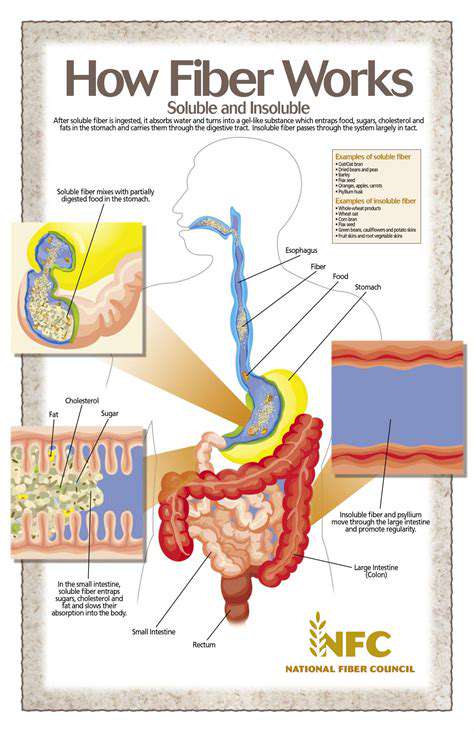
The Marvelous Mouth: The Journey Begins
The digestive system's incredible journey begins in the mouth, a vital entry point for food. Chewing, a crucial mechanical process, breaks down large food particles into smaller pieces, increasing the surface area for enzyme action. This initial breakdown is essential for the efficient absorption of nutrients later in the process. Saliva, a watery substance produced by the salivary glands, moistens the food and contains enzymes that begin the chemical digestion of carbohydrates.
The teeth, specialized structures, play a critical role in mastication. Different types of teeth, incisors, canines, premolars, and molars, are uniquely designed to perform different functions, from biting and tearing to grinding and crushing. The tongue, a muscular organ, helps to mix the food with saliva and move it around the mouth, facilitating the chewing process and preparing it for swallowing.
The Esophageal Expedition: A Muscular Transit
From the mouth, the food bolus embarks on its journey through the esophagus, a muscular tube connecting the pharynx to the stomach. The esophagus's muscular contractions, known as peristalsis, propel the food downward, ensuring its uninterrupted passage to the stomach. This rhythmic wave-like motion is involuntary, meaning we don't consciously control it, allowing us to eat and carry on with other activities simultaneously.
The esophagus's smooth muscle lining plays a crucial role in this process, working tirelessly to move the food in a controlled manner. This muscular action is essential for preventing food from flowing back up into the mouth. Furthermore, the esophagus's lining is highly resistant to the harsh acidic environment of the stomach, protecting itself from potential damage.
The Stomach's Powerful Processing: A Chemical Transformation
The stomach, a muscular organ, acts as a temporary storage and processing center for the ingested food. The stomach's powerful churning action, coupled with the release of gastric juices, further breaks down the food into a semi-liquid mixture called chyme. This acidic environment is essential for activating digestive enzymes and killing harmful bacteria.
The gastric glands within the stomach lining secrete hydrochloric acid and enzymes, such as pepsin, which initiate the digestion of proteins. This complex chemical process is vital for extracting the nutrients from the food we consume, preparing it for absorption in the intestines. The stomach's muscular walls also regulate the rate at which chyme enters the small intestine.
Beyond the Basics: The Impact on Overall Health

Optimizing Operational Efficiency
Streamlining processes and leveraging technology are crucial for achieving optimal operational efficiency. This often involves identifying bottlenecks, implementing automation where possible, and re-evaluating existing workflows to eliminate redundancies. By focusing on these areas, businesses can significantly reduce costs and improve productivity. Furthermore, this approach fosters a more agile and responsive organizational structure, allowing for quicker adaptation to changing market demands.
A key aspect of optimizing operational efficiency is the meticulous analysis of current processes. This involves understanding every step of the workflow, from raw material acquisition to final product delivery, and identifying areas for improvement. This data-driven approach can reveal hidden inefficiencies that might otherwise go unnoticed.
Enhancing Organizational Structure
A well-structured organization is fundamental to achieving strategic goals. This includes clearly defined roles and responsibilities, effective communication channels, and a robust decision-making framework. A well-defined structure fosters a collaborative environment where employees feel empowered to contribute their expertise. This leads to increased morale and productivity.
Effective communication is paramount to any organization’s success. This encompasses clear communication channels, transparent reporting, and regular feedback mechanisms. Open communication fosters a shared understanding of goals and objectives, which is vital for alignment across departments and teams.
Improving Customer Satisfaction
Customer satisfaction is a cornerstone of any successful business. Understanding customer needs and expectations is crucial for creating products and services that meet those needs. Excellent customer service, responsive communication, and a commitment to addressing concerns promptly are essential elements of building strong customer relationships.
Exceptional customer experiences lead to increased customer loyalty and positive word-of-mouth referrals. This, in turn, contributes significantly to long-term growth and profitability. Continuously seeking feedback and adapting to customer preferences are crucial aspects of maintaining high levels of customer satisfaction.
Leveraging Technological Advancements
Technology plays a pivotal role in enhancing operational efficiency and organizational effectiveness. Integrating innovative technologies like automation, data analytics, and cloud computing can streamline processes, reduce costs, and improve decision-making. This allows for a more agile and adaptable business model.
Embracing emerging technologies is crucial for maintaining a competitive edge in today's dynamic market. Staying abreast of the latest advancements and implementing them strategically can significantly impact a business's operational capabilities and overall performance. The integration of these technologies can result in a more streamlined and efficient workflow. Moreover, it allows businesses to tap into real-time data for informed decision-making.
Developing a Robust Financial Strategy
A robust financial strategy is essential for long-term sustainability and growth. This includes meticulous budgeting, accurate forecasting, and effective financial controls. Implementing a sound financial strategy allows for better resource allocation and risk management. This provides a clear roadmap for achieving financial objectives and navigating potential challenges.
Financial planning is a continuous process. It requires regular monitoring of financial performance, adjustments to strategies based on market conditions, and proactive measures to mitigate risks. A proactive approach to financial management allows businesses to adapt to changing economic landscapes and maintain financial stability.
Promoting a Culture of Innovation
Fostering a culture of innovation is critical for long-term success. This involves encouraging creativity, experimentation, and a willingness to embrace new ideas. Cultivating an environment where employees feel empowered to propose new solutions can lead to breakthrough innovations. This can include implementing mechanisms for idea generation, providing resources for experimentation, and rewarding innovative thinking.
Encouraging a culture of continuous improvement is essential for adapting to changing market demands and emerging technologies. This means consistently seeking ways to enhance existing processes, introduce new products and services, and improve overall operational efficiency. This proactive approach not only keeps the organization ahead of the curve but also ensures its long-term viability.